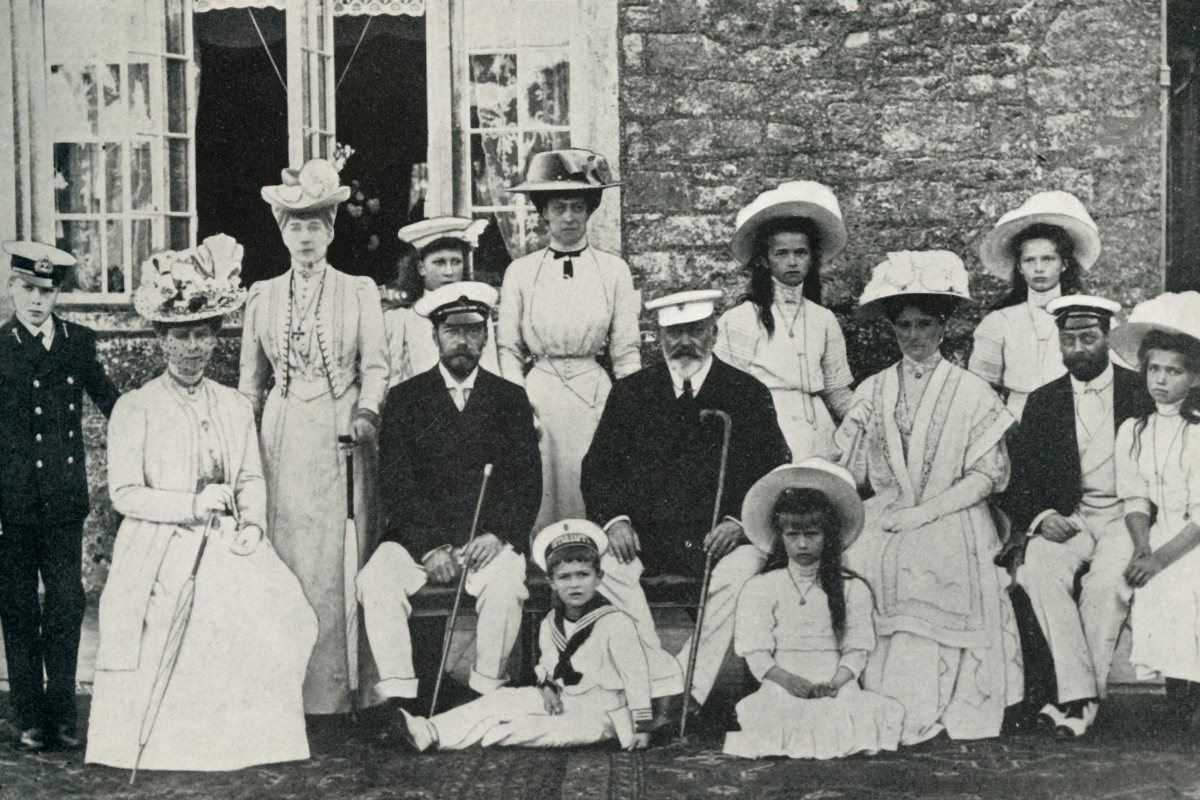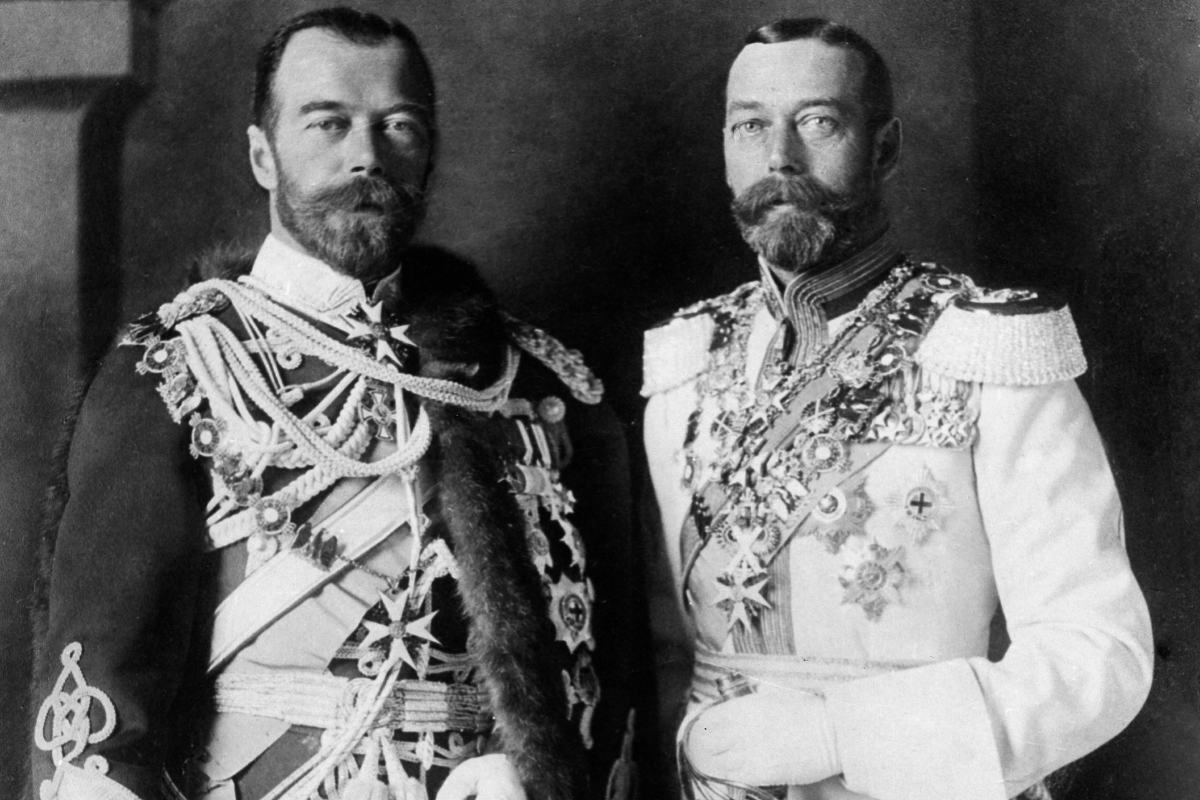
There's a storyline in season five of The Crown which has fascinated everyone who has watched the latest instalment of the Netflix series.
In episode six, titled Ipatiev House, there was a flashback to the sticky history between the British Royal Family and their Russian cousins in the early 20th century.
During this era, the House of Windsor and Buckingham Palace was headed by the late Queen Elizabeth's grandfather King George V and his wife Queen Mary.
Queen Victoria, King George V's grandmother, is often referred to as "the grandmother of Europe" given that lots of her children and grandkids married into royal families across the globe. As a result, King George V's first cousin was none other than Tsar Nicholas II of Russia.
Although Nicholas II and George V were first cousins, they could easily have passed as twins.
 Nicholas II and George V in 1913. Image: Getty.
Nicholas II and George V in 1913. Image: Getty.

